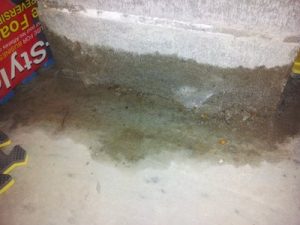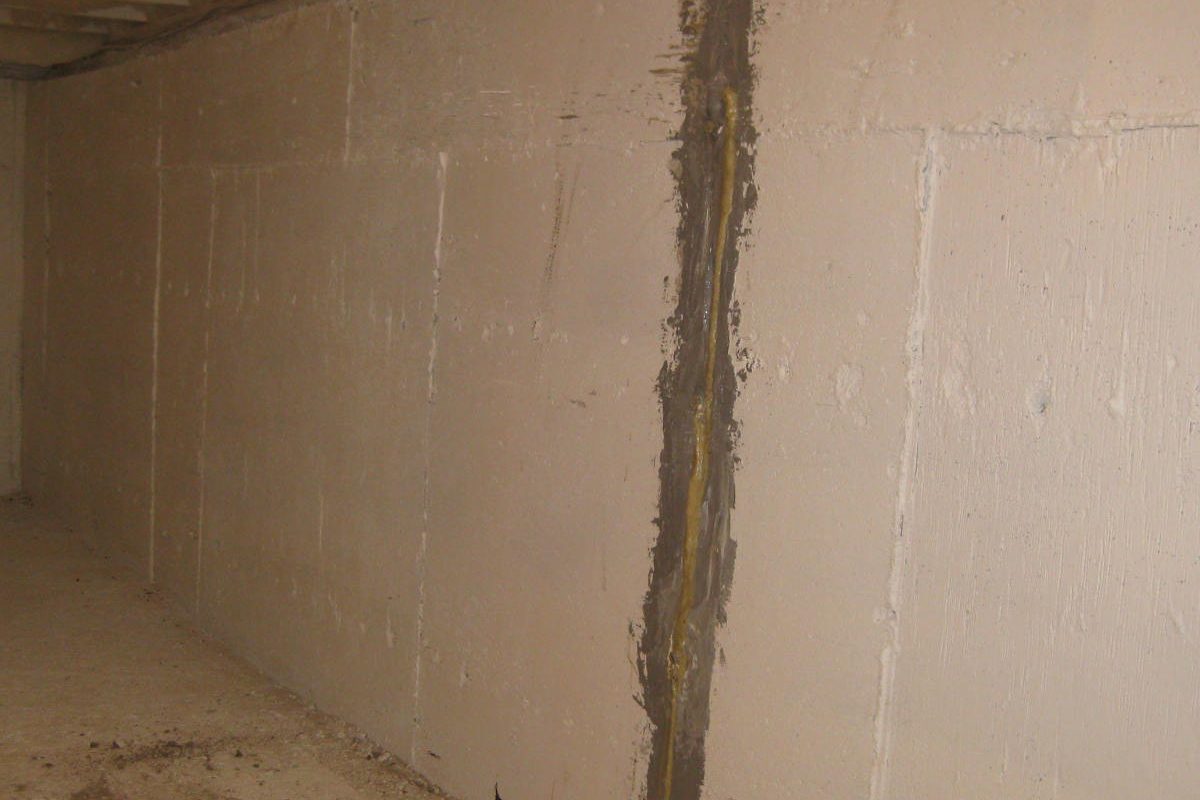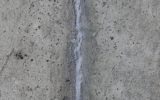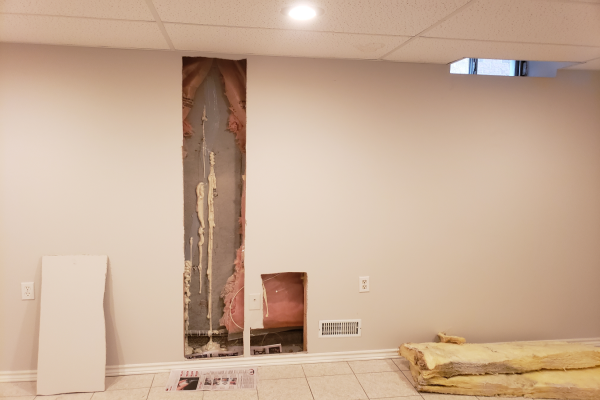The internet has increasingly become the place of choice for most people looking for information on basement waterproofing related topics. The amount of information is so abundant that finding the information you are looking is often frustrating and very time consuming.
In this post we provide you with a concise listing of the different types of basement leaks and what the applicable basement waterproofing methods are for each foundation type; as well as helpful tips.
The bottom line: The basement waterproofing method used must address the root cause of the problem
Does this look familiar?

There are many possible ways in which water finds its way into your basement; consequently, the basement waterproofing methods chosen must be specific to the cause of your wet basement problem for any repair to be an effective one. Variables such as crack size, basement leak location, the presence of moisture in a crack or on the surface of the wall, accessibility of the area to be repaired, the source of the basement leak, the existence of prior waterproofing repairs and your foundation type are some of the many factors that have a bearing on the most appropriate wet basement repair solutions or foundation sealing methods.
In order to wisely choose the best wet basement repair methods it is important that you work with our experienced technicians to select the most effective solution for your specific wet basement issue. In the table below we have summarized typical sources of basement leaks, the available basement waterproofing methods / wet basement solutions, as well as the relative cost of each type of method.
Need help? Contact us.
![]()
There are both interior and exterior repair options available for virtually every type of basement leak.
Be sure to read our companion blog article entitled: Sorting Through The Available Wet Basement Solutions

It is important to keep in mind that some basement waterproofing companies sell proprietary waterproofing systems; it follows that they will attempt to sell you their system. It is our view that you would be better served by a waterproofing company that offers all available wet basement solutions as opposed to proprietary basement waterproofing systems. We are firm in this belief because basement waterproofing should be done in a way that is best for your budget, your foundation, and the nature of the problem that you are experiencing.
In this article we present, in tabular format, all of the available repair options for basement leaks parsed by foundation type.
Wet basement repair methods classified by foundation type:
Poured Concrete Foundation leak repair methods
|
Problem Causing Basement Leak |
Available Repair Solutions |
| Crack is actively leaking | Polyurethane crack injection $$ or exterior excavation & crack repair $$$ |
| Expansion joint leakage | Polyurethane injection $$ or external excavation and waterproofing $$$$ |
| Tie-rod hole leakage | Polyurethane injection $ or external excavation and waterproofing $$$ |
| Snap-rod leakage | Epoxy injection or polyurethane injection $ |
| Cracked overhead structures | Polyurethane crack injection $$ – $$$$ depending on scope of work |
| Leakage from drilled hole | Polyurethane injection $ |
| Leakage from honeycombing | Polyurethane injection $$ or external excavation and waterproofing $$$$ |
| Leakage from a pipe penetration | Polyurethane injection and conduit caulking application from inside or outside, based on accessibility $$ – $$$ |
| Leakage at I-beam cut-out | Polyurethane injection $$ or excavation & application of waterproof membrane $$$ |
| Leakage between window frame and foundation | Caulking around window frame $, and/or window well drain installation $$$ |
| Leakage from an existing crack repair | Polyurethane crack injection with an acid flush $$ or external excavation and waterproofing & crack repair $$$ |
| Leakage between porch slab and foundation wall | Caulking (if possible) $, or application of a membrane over the joint where the slab contacts the wall $$$$ |
| Water leaking from the top of the foundation wall | Landscaping $$$ and/or caulking $, or tuck pointing $$ – $$$, depending on the situation |
| Structural reinforcement / stabilization of a wall crack | Installation of carbon fiber staples $$ |
| High water table / Water coming up from beneath the basement floor | Sump pump installation $$$ |
Concrete Block / Cinder-block Foundation leak repair methods
|
Problem Causing Basement Leak |
Available Repair Solutions |
| Drilled hole and/or mortar joint seepage | Interior weeping tile system $$$$ or external excavation and waterproofing $$$$$$$$ |
| Step cracking or minor bowing of the wall | Internal or external waterproofing and Installation of carbon fiber straps $$$$ |
| Water entering basement from beneath the floor due to a high water table | Sump pump installation $$ |
Stone Foundation leak repair methods
|
Problem Causing Basement Leak |
Available Repair Solutions |
| Drilled hole and/or mortar joint seepage | Interior weeping tile system $$$$ or external excavation and waterproofing $$$$$$$$ |
All Foundations
|
Problem Causing Basement Leak |
Available Repair Solutions |
| Leakage between bottom of window frame and foundation or leakage through the window | Window well replacement $$ and sometimes window well drain installation $$ |
Planning on fixing the leak on your own?
Repairing leaking basement walls, from inside the home, using surface treatments such as hydraulic cement, rubberized coatings, sealants, and tar, are not recommended by professional waterproofing contractors because such basement waterproofing methods ultimately cause deterioration of concrete and mortar joints. The deterioration occurs because trapped water saturates naturally porous concrete; consequently, the moisture within damp concrete walls, that are exposed to freezing temperatures, expands approximately 9%. This expansion causes spalling, crack growth, and long-term deterioration of the foundation. Prolonged exposure of a foundation to ice, and water saturation, can result in foundation failure and/or the weakening of the foundation.







